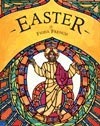Carl E. Olson's Blog, page 160
March 28, 2013
Notes from Rome by John Paul Shimek
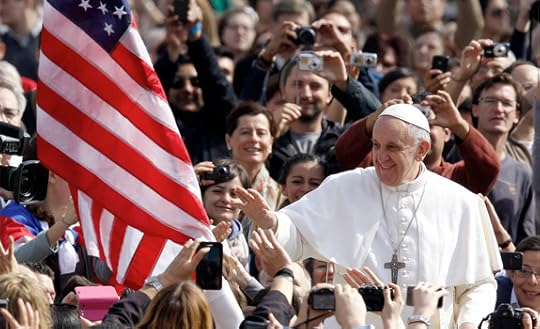
Notes from Rome by John Paul Shimek | Catholic World Report
Blessed Pope John Paul II’s 1996 Apostolic Constitution Universi
Dominici Gregis ordained that, “After the
solemn ceremony of the inauguration of the Pontificate and within an
appropriate time, the Pope will take possession of the Patriarchal Archbasilica
of the Lateran, according to the prescribed ritual” (UDG, n. 92). On March 27, Vatican Information Service
announced the date for that event. In an official bollettino of the Sala Stampa della Santa Sede, the Vatican announced that “The solemn celebration
of the Eucharist during which Francis will take possession of the cathedra of
the Bishop of Rome will take place in the Lateran Basilica on April 7th, the
Second Sunday of Easter, or Divine Mercy Sunday, at 5:30pm.” Unlike Universi
Dominici Gregis, the Press Office’s
bulletin laid the stress on the
‘cathedra of the Bishop of Rome,’ not the ‘Patriarchal Archbasilica of the
Lateran.’ It is well-known that Francis favors the title ‘Bishop of Rome’ over
the title ‘Pope.’ He uses the first title much more often than the second one.
For instance, on the night of his election, Pope Francis used the title
‘Bishop’ some six times, but did not use the title ‘Pope’ once.
###
Pope Francis addressed crowds in Italian at this week’s
General Audience, which was held inside St. Peter’s Square on March 27. After
his address, assistants read translations of his remarks in various national
languages. Then, Pope Francis greeted pilgrims in Italian. Although Francis
speaks Spanish, French, German, and English, he has decided to address crowds
in Italian, the language of the Bishop of Rome and his people. This custom
differs from that of Blessed Pope John Paul II and Pope Emeritus Benedict XVI.
Both men used to address crowds in various languages.
Oftentimes, Pope Francis will address crowds in colloquial
or Roman Italian. In the course of his first Angelus address, he called
Cardinal Walter Kasper a theologian “in gamba,” which is akin to the German “Mensch.” At the same time, he takes
note of Roman or Italian customs, wishing pilgrims a good pranzo. And, he identifies with Roman religious practices.
On the morning after his election, he visited the image of the Salus
Populi Romani at the Basilica of Santa
Maria Maggiore. Pope Francis is making a conscious effort to appeal to the
Roman people as their new bishop.
###
On March 27, the Vatican’s Sala Stampa confirmed that Pope Francis will continue residing at
the Domus Sancta Marthae.
The Easter Triduum: Entering into the Paschal Mystery

The Easter Triduum: Entering into the Paschal Mystery | Carl E. Olson
The liturgical year is a great and ongoing proclamation by the Church of the Gospel of Jesus Christ and a celebration of the Mystery of the Word. Through this yearly cycle, the Catechism of the Catholic Church explains, "the various aspects of the one Paschal mystery unfold"(CCC 1171). The Easter Triduum holds a special place in the liturgical year because it marks the culmination of the yearly celebration in proclaiming the Passion and Resurrection of Jesus Christ.
The Latin word triduum refers to a period of three days and has long been used to describe various three-day observances that prepared for a feast day through liturgy, prayer, and fasting. But it is most often used to describe the three days prior to the great feast of Easter: Holy Thursday, Good Friday, and Holy Saturday and the Easter Vigil. The General Norms for the Liturgical Year state that the Easter Triduum begins with the evening Mass of the Lord's Supper on Holy Thursday, "reaches its high point in the Easter Vigil, and closes with evening prayer on Easter Sunday" (par 19).
Just as Sunday is the high point of the week, Easter is the high point of the year. The meaning of the great feast is revealed and anticipated throughout the Triduum, which brings the people of God into contact – through liturgy, symbol, and sacrament – with the central events of the life of Christ: the Last Supper, His trial and crucifixion, His time in the tomb, and His Resurrection from the dead. In this way, "the mystery of the Resurrection, in which Christ crushed death, permeates with its powerful energy our old time, until all is subjected to him" (CCC 1169). During these three days of contemplation and anticipation the liturgies emphasize the sacrificial death of Christ on the Cross, and the sacraments of baptism and the Eucharist, by which the faithful enter into the life-giving Passion of Christ and grow in hope of eternal life in Him.
Holy Thursday | The Lord's Supper
The Triduum begins with the evening Mass of the Lord’s Supper on Holy Thursday, which commemorates when the Eucharist was instituted at the Last Supper by Jesus. The traditional English name for this day, "Maundy Thursday", comes from the Latin phrase Mandatum novum – "a new command" (or mandate) – which comes from Christ’s words: "A new commandment I give to you, that you love one another; even as I have loved you, that you also love one another" (Jn 13:34). The Gospel reading for the liturgy is from the first part of the same chapter and depicts Jesus washing the feet of the disciples, an act of servitude (commonly done by slaves or servants in ancient cultures) and great humility.
Earlier on Holy Thursday (or earlier in the week) the bishop celebrates the Chrism Mass, which focuses on the ordained priesthood and the public renewal by priests of their promises to faithfully fulfill their office. In the evening liturgy, the priest, who is persona Christi, will wash the feet of several parishioners, oftentimes catechumens and candidates who will be entering into full communion with the Church at Easter Vigil. In this way the many connections between the Eucharist, salvation, self-sacrifice, and service to others are brought together.
These realities are further anticipated in Jesus’ remark about the approaching betrayal by Judas: "Whoever has bathed has no need except to have his feet washed, for he is clean all over; so you are clean, but not all." The sacrificial nature of the Eucharist is brought out in the Old Testament reading, from Exodus 12, which recounts the first Passover and God’s command for the people of Israel, enslaved in Egypt, to kill a perfect lamb, eat it, and then spread its blood over the door as a sign of fidelity to the one, true God. Likewise, the reading from Paul’s epistle to the Christians in Corinth (1 Cor 11) repeats the words given by the Son of God to His apostles at the Last Supper: "This is my body that is for you. Do this in remembrance of me" and "This cup is the new covenant in my blood. Do this, as often as you drink it, in remembrance of me."
Thus, in this memorial of Jesus’ last meal with His disciples, the faithful are reminded of the everlasting value of that meal, the gift of the priesthood, the grave dangers of turning away from God, the necessity of the approaching Cross, and the abiding love that the Lord has for His people.
Good Friday | Veneration of the Cross
This is the first full day of the Easter Triduum, a day commemorating the Passion, Cross, and death of Jesus Christ, and therefore a day of strict fasting. The liturgy is profoundly austere, perhaps the most simple and stark liturgy of the entire year. The liturgy of the Lord’s Passion consists of three parts: the liturgy of the Word, the veneration of the Cross, and the reception of Communion. Although Communion is given and received, this liturgy is not a Mass; this practice dates back to the earliest years of the Church and is meant to emphasize the somber, mournful character of the day. The Body of Christ that is received by the faithful on Good Friday was consecrated the prior evening at the Mass of the Lord’s Supper and, in most cases, was adored until midnight or another late hour.
The liturgy of the Word begins with silence. After a prayer, there are readings from Isaiah 52 and 53 (about the suffering Servant), Psalm 31 (a great Messianic psalm), and the epistle to the Hebrews (about Christ the new and eternal high priest). Each of these readings draws out the mystery of the suffering Messiah who conquers through death and who is revealed through what seemingly destroys Him. Then the Passion from the Gospel of John (18:1-19:42) is proclaimed, often by several different lectors reading respective parts (Jesus, the guards, Peter, Caiaphas the high priest, Pilate, the soldiers). In this reading the great drama of the Passion unfolds, with Jew and Gentile, male and female, and the powerful and the weak all revealed for who they are and how their choices to follow or deny Christ will affect their lives and the lives of others.
The simple, direct form of the Good Friday liturgy and readings brings the faithful face to face with the cross, the great scandal and paradox of Christianity. The cross is solemnly venerated after intercessory prayers are offered for the world and for all people. The deacon (or another minister) brings out the veiled cross in procession. The priest takes the cross, stands with it in front of the altar and faces the people, then uncovers the upper part of the cross, the right arm of the cross, and then the entire cross. As he unveils each part, he sings, "This is the wood of the cross." He places the cross and then venerates it; other clergy, lay ministers, and the faithful then approach and venerate the cross by touching or kissing it. In this way each person acknowledges the instrument of Christ’s death and publicly demonstrates their willingness to take up their cross and follow Christ, regardless of what trials and sufferings it might involve.
Afterward, the faithful receive Communion and then depart silently. In the Byzantine rite, Communion is not even offered on this day. At Vespers a "shroud" bearing a painting of the lifeless Christ is carried in a burial procession, and the faithful keep vigil before it through the night.
Holy Saturday and Easter Vigil | The Mother of All Vigils
The ancient Church celebrated Holy Saturday with strict fasting in preparation of the celebration of Easter. After sundown the Christians would hold an all-night vigil, which concluded with baptism and Eucharist at the break of dawn. The same idea (if not the identical timeline) is found in the Easter Vigil today, which is the high point of the Easter Triduum and is filled with an abundance of readings, symbols, ceremony, and sacraments.
The Easter Vigil, the Church states, ranks "the mother of all vigils" (General Norms, 21). Being a vigil – a time of anticipation and preparation – it takes place at night, starting after nightfall and finishing before daybreak on Easter, thus beginning and ending in darkness. It consists of four general parts: the Service of Light, the Liturgy of the Word, Christian Initiation, and Liturgy of the Eucharist.
The Service of Light begins outdoors (or in a space outside of the main sanctuary) and in darkness. A fire is lit and blessed, and then the Paschal candle, which symbolizes the light of Christ, is lit from the fire by the priest, who proclaims: "May the light of Christ, rising in glory, dispel the darkness of our hearts and minds." The biblical themes of light removing darkness and life overcoming death suffuse the entire Vigil. The Paschal candle will be placed in the sanctuary (usually by the altar) for the Easter season, then will be kept in the baptistery so that when the sacrament of baptism is administered the candles of the baptized can be lit from it.
The faithful then join in procession back to the main sanctuary. The deacon (or priest, if no deacon is present), carries the Paschal Candle, lifting it three different times and chanting: "Christ our Light!" The people respond by singing, "Thanks be to God!" Everyone’s candles are lit from the Paschal candle and the faithful return in procession into the sanctuary. Then theExultet is sung by the deacon (or priest or cantor). This is an ancient and beautiful poetic hymn of praise to God for the light of the Paschal candle. It may be as old as Saint Ambrose (d. 397) and has been part of the Roman tradition since the ninth century. In the darkness of the church, lit only by candles, the faithful listen to the song of light and glory:
Rejoice, O earth, in shining splendor,
radiant in the brightness of your King!
Christ has conquered! Glory fills you!
Darkness vanishes for ever!
And, concluding:
May the Morning Star which never sets
find this flame still burning:
Christ, that Morning Star,
who came back from the dead,
and shed his peaceful light on all mankind,
your Son, who lives and reigns for ever and ever. Amen.
The Liturgy of the Word follows, consisting of seven readings from the Old Testament and two from the New Testament. These readings include the story of creation (Genesis 1 and 2), Abraham and Isaac (Genesis 22), the crossing of the Red Sea (Exodus 14 and 15), the prophet Isaiah proclaiming God’s love (Isaiah 54), Isaiah’s exhortation to seek God (Isaiah 55), a passage from Baruch about the glory of God (Baruch 3 and 4), a prophecy of Ezekiel (Ezekiel 36), Saint Paul on being baptized into Jesus Christ (Rom 6), and the Gospel of Luke about the empty tomb discovered on Easter morning (Luke 24:1-21).
These readings constitute an overview of salvation history and God’s various interventions into time and space, beginning with Creation and concluding with the angel telling Mary Magdalene and others that Jesus is no longer dead; "You seek Jesus of Nazareth, the crucified. He has been raised; he is not here." Through these readings "the Lord ‘beginning with Moses and all the prophets’ (Lk 24.27, 44-45) meets us once again on our journey and, opening up our minds and hearts, prepares us to share in the breaking of the bread and the drinking of the cup" (General Norms, 11).
Some of the readings are focused on baptism, that sacrament which brings man into saving communion with God’s divine life. Consider, for example, Saint Paul’s remarks in Romans 6: "We were indeed buried with him through baptism into death, so that, just as Christ was raised from the dead by the glory of the Father, we too might live in newness of life." Easter is in many ways the season of baptism, the sacrament of Christian initiation, in which those who formally lived in darkness and death are buried and baptized in Christ, emerging filled with light and life.
From the early days of the ancient Church the Easter Vigil has been the time for adult converts to be baptized and enter the Church. After the conclusion of the Liturgy of the Word, catechumens (those who have never been baptized) and candidates (those who have been baptized in a non-Catholic Christian denomination) are initiated into the Church by (respectively) baptism and confirmation. The faithful are sprinkled with holy water and renew their baptismal vows. Then all adult candidates are confirmed and general intercessions are stated. The Easter Vigil concludes with the Liturgy of the Eucharist and the reception of the Body, Blood, Soul, and Divinity of the Crucified and Risen Lord. For as Eastern Catholics sing hundreds of times during the Paschal season, "Christ is risen from the dead; by death He conquered death, and to those in the graves, He granted life!"
(This article was originally published in a slightly different form in the April 9, 2006, edition of Our Sunday Visitor newspaper.)
Related IgnatiusInsight.com Articles:
• The Cross — For Us | Hans Urs von Balthasar
• The Question of Suffering, The Response of the Cross | Joseph Cardinal Ratzinger
• The Truth of the Resurrection | Joseph Cardinal Ratzinger
• Easter: The Defiant Feast | Fr. James V. Schall, S.J.
• Easter Delivers Us From Evil | Carl E. Olson
March 27, 2013
Ignatius Press to Release Four Books by Cardinal Bergoglio (Pope Francis)
SAN FRANCISCO, March 26, 2013 – With Easter upon the world’s Christians, the desire to get to know the new leader of the Catholic Church is ever-increasing. From his first words on the loggia to the many addresses he has already made, the interest in what this Pope teaches and how he will pastor over a billion Catholics has become a regular part of daily dialogue at office water coolers, on nightly news shows and through Facebook commentary.
And there is no better way to get to know one’s philosophy than to read from their scholarship. Ignatius Press will release first in Spanish and then in English, four volumes, which are drawn from a series of addresses Cardinal Jorge Mario Bergoglio gave in 2005 to the Archdiocese of Buenos Aires. The books will reveal the Cardinal’s deep Ignatian spirituality.
In the first volume, Cardinal Bergoglio subtly distinguishes between sin and corruption. He argues that continuous complicity with sin leads to corruption and ultimately to social collapse.
By attending to the dangers of sin and corruption we open ourselves to be transformed by the perfecting and liberating message of the Gospel.
In the second volume, Cardinal Bergoglio introduces us, in a profound meditation, to the writings of San Doroteo de Gaza, and orients us down a path towards humility and love, which are necessary components to form real Christian communities. He addresses the vice of focusing on others’ sins. To overcome this bad habit, he proposes the practice of self-accusation, in which individuals and communities reflect on their own shortcomings and sins.
In the third and fourth volumes, the new Pope speaks to and challenges educators: How far can we walk without a clear path? Where can we go with no goal to guides our steps? What is the way out of these difficult times the world is facing? He urges those in academia to form tomorrow’s leaders who will guide us towards Christ and his destiny for humanity. And specifically in the fourth volume, he challenges educators to deepen their commitment to teach with passion and zeal as Jesus the master teacher did. This volume will include key readings for individual as well as group study.
All four volumes in Spanish are available now for pre-order at www.ignatius.com. Volumes one and two will be combined into one volume for the English language, and will be released together in April.
For more information, to request review copies or to schedule an interview with Ignatius Press, please contact Lisa Wheeler (770-591-0045) or LWheeler@carmelcommunications.com) of Carmel Communications.
The March for Marriage, the March for Kids
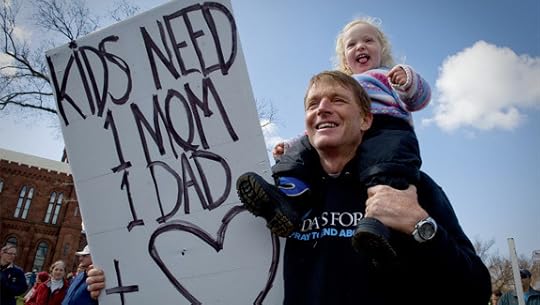
The March for Marriage, the March for Kids | John Burger | CWR
An estimated 10,000 rally and march to the U.S Supreme Court in defense of marriage
WASHINGTON—At the end of a four-hour rally and march to the United States Supreme Court to defend the traditional definition of marriage, Brian Brown brought his wife and eight children up on a stage on the National Mall.
“This is why I do what I do,” he said, pointing to the Browns’ kids.
Indeed, in many ways, the March for Marriage on the National Mall yesterday was more about children than about the institution of marriage, which was the subject of debate up the hill at the Supreme Court.
Speaker after speaker at the first March for Marriage, organized by Brown’s National Organization for Marriage, spoke about the importance of preserving the traditional definition of matrimony for the sake of young people, saying it is how God and nature ordered humanity—and science has confirmed that children need the unique gifts men have in being fathers and women have in being mothers.
“Marriage matters to kids,” said San Francisco Archbishop Salvatore Cordileone, chairman of the United States Conference of Catholic Bishops' Subcommittee for the Promotion and Defense of Marriage. “They deserve a mother and a father, and society needs an institution that connects children to their parents… Marriage is the only institution that does this.”
“Only a man can be a father and a woman can be a mother,” the archbishop continued, “It’s kind of hard to believe that I have to stand here and explain that. It’s like, ‘Is anyone home?’” [Read Abp. Cordileone's entire address.]
Cathy Ruse of the Family Research Council, and the former spokeswoman for pro-life concerns of the U.S. bishops' conference, noted that the same-sex “marriage” debate is “always framed in terms of the rights and desires of adults. But the entire reason the government is involved in marriage policy is the children.”
Meet Fr. Roderick Vönhogen, the "podcasting priest"
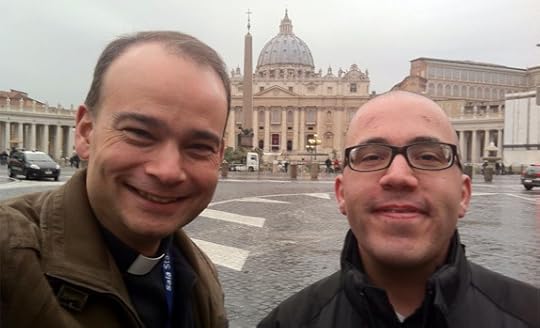
Fr. Roderick Vönhogen and the author in St. Peter's Square.
by John Paul Shimek | Catholic World Report
Known as the “podcasting priest,” Fr. Roderick Vönhogen is a pioneer in the new social media. His podcast program “The Catholic Insider” draws an audience from around the globe. Each week, listeners in North America, Europe, Australia and New Zealand tune in to his hour-long show. It was his audience’s enthusiasm for the show that inspired him to launch the Star Quest Production Network (or, SQPN), one of worldwide Catholicism’s most popular media platforms in the service of the new evangelization.
Last week, I had a chance to sit down to dinner with Fr. Roderick near the Vatican. Over Italian pizza, pasta, patate fritte, and vino rosso, we talked about the challenges and promises of a digitized Church.
Although Fr. Roderick hails from Holland, his English is flawless and his imitations of Australian and British accents are pitch-perfect. While he can proclaim the Gospel in numerous national languages – he speaks Dutch, German, French, and Italian – it is his infectious cheerfulness that best communicates the message of Christ and the Church. Several times, our dinner table shook as we busted up laughing. More than a media mogul with exceptional talent, Fr. Roderick is a priest alive in Christ Jesus – a man who has been surprised with the generous love of God. And, he communicates the goia Christiana like few others.
Since Fr. Roderick launched his English-language podcast program in 2005, he has traveled the world, broadcasting Christ’s message to countless listeners. He has done shows in his native Europe, North America, Latin America, and Africa. He will be in Rio de Janeiro for the 2013 World Youth Day, which is scheduled for July 23-28. Along the road, Fr. Roderick has had some surprising adventures and he has encountered some demanding challenges, as well. In 2005, just moments after Pope John Paul II died, he broadcast a high-speed bike chase toward St. Peter’s Square where he joined pilgrims beneath the windows of the papal apartment.
Fr. Roderick got started in media when he studied social communications at the Pontifical Gregorian University here in Rome.
Ignatius Press releases first Pope biography today as e-book, April 10th in stores
Tornielli book on Pope Francis publishes first in the world, ahead of schedule
ATLANTA, March 27, 2013 – The much-anticipated first biography on the new Pope is here, one month ahead of schedule, and the author is Vatican insider, Andrea Tornielli, who as Nicole Winfield of the Associated Press describes, is “one of the best, if not the best, Vatican reporter out there. Period. He is 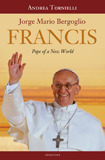 the best-sourced, most accurate and one of the most knowledgeable reporters among the unique band of ‘Vaticanisti’ who travel with the pope, digest theological treatises as bedtime reading and count cardinals and monsignors as friends.”
the best-sourced, most accurate and one of the most knowledgeable reporters among the unique band of ‘Vaticanisti’ who travel with the pope, digest theological treatises as bedtime reading and count cardinals and monsignors as friends.”
Available today in English, first as an e-book and in hardcover April 10, “Francis, Pope of a New World” (Ignatius Press, $19.95), is a fascinating, definitive and complete biography on Pope Francis. It provides the keys to understanding the man who was a surprise choice, even a revolutionary choice, for pope. It is the story of why the cardinal electors of the Catholic Church set aside political and diplomatic calculations to elect a pope to lead the renewal and purification of the worldwide Church of our time.
There will be other biographies on the Pope, but none will provide the kind of insight into the new leader of over one billion Catholics as this one.
What led to the election of the first Latin American, first Jesuit pope?
What is the background against which his first papal acts find their context?
What was his family life like and how did his family view his decision to become a priest?
How did Jorge Bergoglio minister as a Jesuit priest and as an archbishop in violent, horrible times?
These questions and more are addressed in the book. In addition, there is invaluable background on Pope Benedict’s resignation and the process of electing Pope Francis.
Tornielli has set the bar high with this biography on Pope Francis. More than a journalist covering a beat, he lives and breathes his subject. “He has been fascinated by the church since he was 14, and it shows. Yes, he has a degree in classic Greek. But more importantly, he knows the Vatican and the people who inhabit it, and uses that knowledge to inform the world about what goes on in the frescoed halls of the Apostolic Palace. If anyone needed evidence, take his reporting of the conclave that elected Pope Francis the 265th Successor of Peter: His reports about the behind-the-scenes negotiations before the conclave were cited by cardinals as the reason for imposing a media blackout on the process. It didn't work. Tornielli kept on reporting, providing a modicum of transparency on the most secretive of processes,” says Winfield.
For an interview with Tornielli, contact Lisa Wheeler (770-591-0045) or LWheeler@CarmelCommunications.com) or Kevin Wandra (404-788-1276 or KWandra@CarmelCommunications.com) of Carmel Communications.
March 26, 2013
Revisiting Benedict XVI's three encyclicals
The good folks at Catholic Pulse asked me to write an essay reflecting on the three encyclicals of Pope Emeritus Benedict XVI, and that essay has now been posted. Rather than just recap the three texts, I reflected on some of the significant themes developed through each and indicate how those themes demonstrate the cohesive theological vision of the encyclicals and, of course, of Benedict. Here are the opening paragraphs of my essay:
Putting the pontificate of Benedict XVI into context and making
judgments about the nebulous creature named “legacy” is a difficult
task, especially just weeks after his pontificate concluded. Although I
tend to be a “glass half empty” type of person and generally try to
avoid hyperbole, I do believe we are living in a golden age of the
papacy, at least in terms of popes who are holy and brilliant, a
combination not to be taken for granted.
If Blessed John Paul II is, as many (including myself) think he is,
the greatest philosopher-pope in the history of the Church, then
Benedict is, I think, the greatest theologian-pope, whose theological corpus
was already quite impressive in both scope and depth prior to his
election. Equally remarkable is the body of work produced during his
relatively short, eight-year-long pontificate, notably (but not limited
to) the three Jesus of Nazareth volumes; the audiences on the
apostles, saints, fathers, mystics, and doctors of the Church; the
audiences on prayer; apostolic exhortations on the Eucharist and
Scripture; and, of course, the three encyclicals: Deus Caritas Est (on Christian love), Spe Salvi (on Christian hope), and Caritas in Veritate (on integral human development).
Entire books could be written about each encyclical and, in fact, some have already been written.
My modest goal here is to consider how these three significant texts
provide a cohesive, integrated understanding of the person of Jesus
Christ (Christology), the nature and mission of the Church
(ecclesiology), and salvation and the last things (soteriology and
eschatology).
Read the entire essay, "Love, Hope, and Truth: Benedict XVI’s Three Encyclicals", at CatholicPulse.com.
The three encyclicals are available online on the Vatican site, and are also available in handsome hardcover editions from Ignatius Press:
• God is Love: Deus Caritas Est (Hardcover)
• Saved in Hope: Spe Salvi (Hardcover)
• Charity in Truth: Caritas in Veritate (Hardcover)
“Satanism is about destroying the Church”
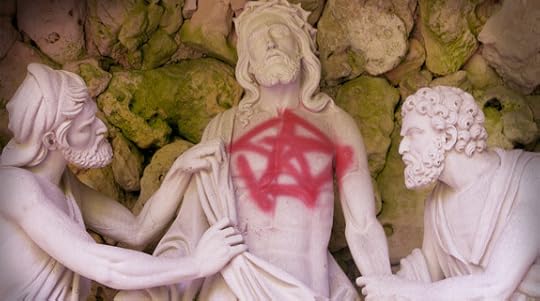
“Satanism is about destroying the Church” | Jim Graves | Catholic World Report
From Satanism to the Occult and back to the Catholic Church, one woman found hope and healing through Christ and the sacraments.
The world of Satanism
is a secretive one, often vulgar and sometimes dangerous, or so says
ex-Satanist and Catholic “revert.” Fifty-one-year-old Deborah [who requested her last name not be
used in this article] said that although the beliefs of Satanists vary
tremendously, they center on indulgence of the appetites and a mockery of
Christianity. Additionally, you’d be surprised to discover that seemingly
respectable citizens in your community are members of Satanic covens. As
she explained, “They’re people you meet on the street.”
Since memberships
in covens are so secretive—with the threat of death for members who share
details of their participation, according to Deborah—it is rare to find
ex-Satanists willing to share their experiences.
Deborah was born in
1961 and grew up in Salem, Massachusetts. She attended both Catholic and public
schools. As a teen, she got involved in Satanism. She returned to the
Catholic Church in 2009. Today, she is married and lives on a farm in Maine.
Deborah shared
details of her experiences in her book A
Message of Hope, Confessions of an Ex-Satanist: How to Protect Yourself from
Evil. She is also a featured speaker at the Spiritual Warfare
Conference, held at the Ontario DoubleTree Hotel in Ontario, California on May
4 and 5, 2013. Deborah recently spoke to CWR.
CWR: Tell me a little about your background and
how you first got involved in Satanism.
Deborah: First off, as an adult, I was diagnosed as
a high-functioning autistic. [Autism is a neurological disorder that can
adversely affect a person’s ability to communicate and establish friendships
with peers. It is often manifested in children through a variety of
atypical behaviors, such as the ones Deborah describes here.] When I was a
child I was undiagnosed, and I exhibited a lot of autistic symptoms. These
included rocking, hand-flapping, and humming. I also argued with my
teachers, and didn’t want to socialize with my peers. Today, I’m still
unable to live independently.
Additionally, my
mom was a German in an anti-German, Jewish neighborhood. (My father
abandoned the family when I was young.) The other kids in school would
make fun of me, steal my toys, and call me a “retard.” I was also beat up
physically every day. I begged my mom to let me stay home from
school. I was hurt, angry, and wanted to be by myself. I isolated
myself from others.
I attended a Catholic
school from grades 7-10. I went to the nuns who ran the school for help.
Because of my behavior, I was unpopular with them and they suggested I deserved
the treatment I received. I was angry at the nuns, so, as a joke and to
get even, I started coming to school wearing the pentagram. I would also draw
it on my homework assignments. They asked me to leave the school.
Now, these were the
pre-Internet days, so I began reading about Satanism in books, and then began
talking with Satanists.
CWR: Did you attend Black Masses?
March 25, 2013
The Mystery of the Annunciation is the Mystery of Grace

The Mystery of the Annunciation is the Mystery of Grace | Joseph Cardinal Ratzinger | Ignatius Insight
The mystery of the annunciation to Mary is not just a
mystery of silence.It is above and beyond all that a mystery of grace.
We feel compelled to ask ourselves: Why did Christ really
want to be born of a virgin? It was certainly possible for him to have been
born of a normal marriage. That would not have affected his divine Sonship,
which was not dependent on his virgin birth and could equally well have been
combined with another kind of birth. There is no question here of a downgrading
of marriage or of the marriage relationship; nor is it a question of better
safeguarding the divine Sonship. Why then?
We find the answer when we open the Old Testament and see
that the mystery of Mary is prepared for at every important stage in salvation
history. It begins with Sarah, the mother of Isaac, who had been barren, but
when she was well on in years and had lost the power of giving life, became, by
the power of God, the mother of Isaac and so of the chosen people.
The process continues with Anna, the mother of Samuel, who
was likewise barren, but eventually gave birth; with the mother of Samson, or
again with Elizabeth, the mother of John the Baptizer. The meaning of all these
events is the same: that salvation comes, not from human beings and their
powers, but solely from God—from an act of his grace.
(From Dogma und Verkundigung, pp. 375ff; quoted in Co-Workers of the Truth: Meditations
for Every Day of the Year [Ignatius Press, 1992], pp. 99-100.)


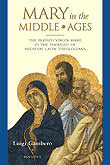







The annunciation to Mary happens to a woman, in an
insignificant town in half-pagan Galilee, known neither to Josephus nor the
Talmud. The entire scene was "unusual for Jewish sensibilities. God reveals
himself, where and to whom he wishes." Thus begins a new way, at whose center
stands no longer the temple, but the simplicity of Jesus Christ. He is now the
true temple, the tent of meeting.
The salutation to Mary (Lk 1:28-32) is modeled closely on
Zephaniah 3: 14-17: Mary is the daughter Zion addressed there, summoned to
" rejoice", in formed that the Lord is coming to her. Her fear is
removed, since the Lord is in her midst to save her. Laurentin makes the very
beautiful remark on this text: "... As so often, the word of God proves to be a
mustard seed.... One understands why Mary was so frightened by this message (Lk
1:29). Her fear comes not from lack of understanding nor from that
small-hearted anxiety to which some would like to reduce it. It comes from the
trepidation of that encounter with God, that immeasurable joy which can make
the most hardened natures quake."
In the address of the angel, the underlying motif the Lucan
portrait of Mary surfaces: she is in person the true Zion, toward whom hopes
have yearned throughout all the devastations of history. She is the true Israel
in whom Old and New Covenant, Israel and Church, are indivisibly one. She is
the "people of God" bearing fruit through God's gracious power. ...
Transcending all problems, Marian devotion is the rapture of joy over the true,
indestructible Israel; it is a blissful entering into the joy of the Magnificat
and thereby it is the praise of him to whom the daughter Zion owes her whole self
and whom she bears, the true, incorruptible, indestructible Ark of the Covenant.
(From Daughter Zion: Meditations on the Church's Marian Belief [Ignatius
Press, 1983], pp. 42-43, 82.)
Related IgnatiusInsight.com Articles and Excerpts:
• Mary in Byzantine Doctrine and Devotion | Brother John M. Samaha, S.M.
• Fairest Daughter of the Father: On the Solemnity
of the Assumption | Rev. Charles M. Mangan
• The Blessed Virgin in the History of
Christianity | John A. Hardon, S.J.
• "Hail, Full of Grace": Mary, the Mother of Believers |
Joseph Cardinal Ratzinger
• Mary in Feminist Theology: Mother of God or Domesticated Goddess? |
Fr. Manfred Hauke
• Excerpts from The Rosary: Chain of Hope | Fr.
Benedict Groeschel, C.F.R.
• The Past Her Prelude: Marian Imagery in the Old
Testament | Sandra Miesel
• Immaculate
Mary, Matchless in Grace | John Saward
• The Medieval
Mary | The Introduction to Mary in the Middle Ages | by Luigi Gambero
• Misgivings About
Mary | Dr. James Hitchcock
• Born of the Virgin Mary | Paul Claudel
• Assumed Into Mother's
Arms | Carl E. Olson
• The Disciple
Contemplates the Mother | Erasmo Leiva-Merikakis
In the Footsteps of the March for Life
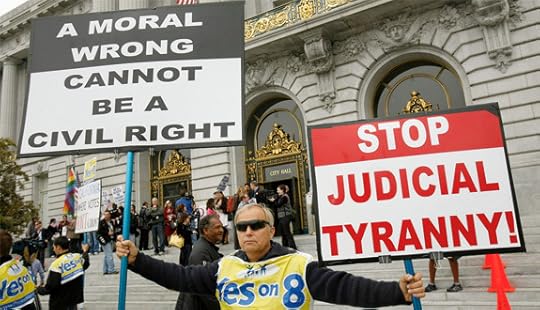
In the Footsteps of the March for
Life |
John Burger | Catholic World Report
Marriage supporters to rally in Washington, D.C., on March
26 as Supreme Court hears cases
Supporters of both traditional marriage and same-sex unions
will converge on the nation’s capital toward the end of this month as the
Supreme Court takes up two cases that could do to marriage what Roe v. Wade did to unborn human life.
The National Organization for Marriage is holding a March for Marriage on Tuesday morning,
March 26, as the high court hears oral arguments in the first case, a challenge
to California’s Proposition 8, which changed that state’s constitution to
define marriage as the union of one man and one woman. Arguments are expected
to be heard the next day in a case contesting the federal Defense of Marriage
Act (DOMA).
“The Court will see diversity and strength of support for
marriage as we march by,” says Brian Brown, executive director of the National
Organization for Marriage. He expects at least 5000 participants, including
Republicans and Democrats, whites, blacks and Hispanics, Catholics and
Protestants. The march will begin from the National Mall near the Smithsonian,
up Constitution Avenue, past the U.S. Capitol and the Supreme Court and back to
the Mall. There, at about 11 am, marchers will hear from a lineup of speakers
that will include San Francisco Archbishop Salvatore Cordileone, the U.S.
bishops’ point man on protecting marriage from attempts at its legal
redefinition.
The show of support is important, Brown believes, because of
the justice who is often considered a “swing vote” on the court: Anthony
Kennedy.
Carl E. Olson's Blog
- Carl E. Olson's profile
- 20 followers


